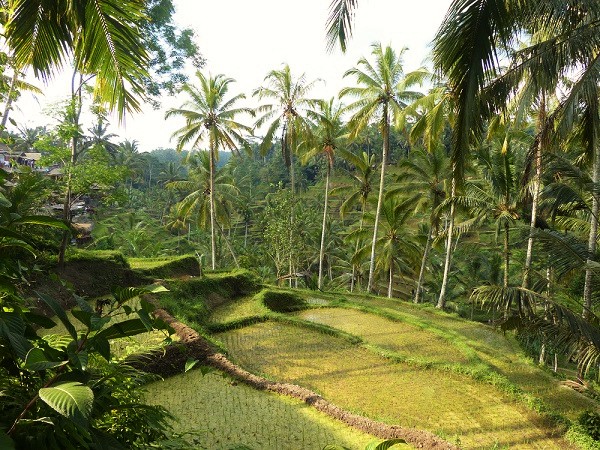Rice in Indonesia: Irrigation, Sawah Size & Seeds Need Improvement
Often the lack of quality and quantity of infrastructure in Indonesia has been cited as a reason for limited economic growth. Lack of adequate infrastructure causes the country's logistics costs to rise steeply, thus reducing competitiveness and attractiveness of the investment climate. Also in the country’s natural resources sector Indonesia’s infrastructure problems hamper development. For instance, the lack of quality irrigation to supply ample quantities of water to rice basins causes rice production to be far from optimal.

Currently, Indonesia contains about 8.5 million hectares of rice fields, of which 4.7 million hectares is irrigated. However, according to Professor Mochammad Maksum (Gadjah Mada University in Yogyakarta) quoted in Indonesian newspaper Investor Daily, 60 percent of the country’s rice irrigation infrastructure is damaged and thus limits rice output. Maksum said that since the start of the Reformation Period in 1998, the Indonesian government has neglected investments in irrigation.
Moreover, a considerable amount of rice field (sawah in Indonesian) has been transformed into real estate (housing) or industrial development in the past decade, while productivity is low in Indonesia with 5 ton per hectare per year. Besides troubled irrigation, low productivity is also caused by farmers' use of non-optimal production techniques (which includes low quality seeds). Provided that irrigation and production techniques are of good quality, productivity should become 16 tons per hectare per year.
Therefore, it is important for the new Joko ‘Jokowi Widodo-led government (inaugurated on 20 October 2014) to focus on food sovereignty, specifically rice sovereignty. Indonesia contains a large population (about 250 million in 2014) which consumes large quantities of rice. In fact, Indonesia has the world’s largest per capita rice consumption consuming around 140 kilogram of rice per person per year and as the population grows by about 1.1 percent per year there are more and more mouths to feed in the future. By 2020, the population is expected to number over 265.4 million. Moreover, the poorer households of Indonesia spend over half of their total disposable income on food, particularly rice, and therefore poverty can ignite when the price of rice rises (triggered by shortages).
The government is well aware about the need to safeguarding rice supplies and rice price stability. State procurement agency Bulog (National Logistics Agency), which holds a monopoly on both import and export of rice, is tasked to monitor the distribution process and safeguards rice price stability in the country. It usually maintains a rice stock of between 1.5 and 2.0 million tons by buying from domestic suppliers or foreign exporters. Usually, Bulog imports a few million tons of rice from Vietnam and Thailand.
Jokowi (and running mate Jusuf Kalla) announced during their campaign period that they want to add one million hectares of rice field as well as to improve irrigation on existing fields in an effort to enhance domestic rice production.
In 2014, Indonesia targets to produce 71 million metric tons of unmilled rice, similar to the 71.29 million tons produced last year. However, Statistics Indonesia (BPS) recently said that production in 2014 may fall to 69.9 million tons due to irrigation problems. Would irrigation be of high quality then Indonesia could see an additional five million tons of rice per year.
Bahas
Silakan login atau berlangganan untuk mengomentari kolom ini

